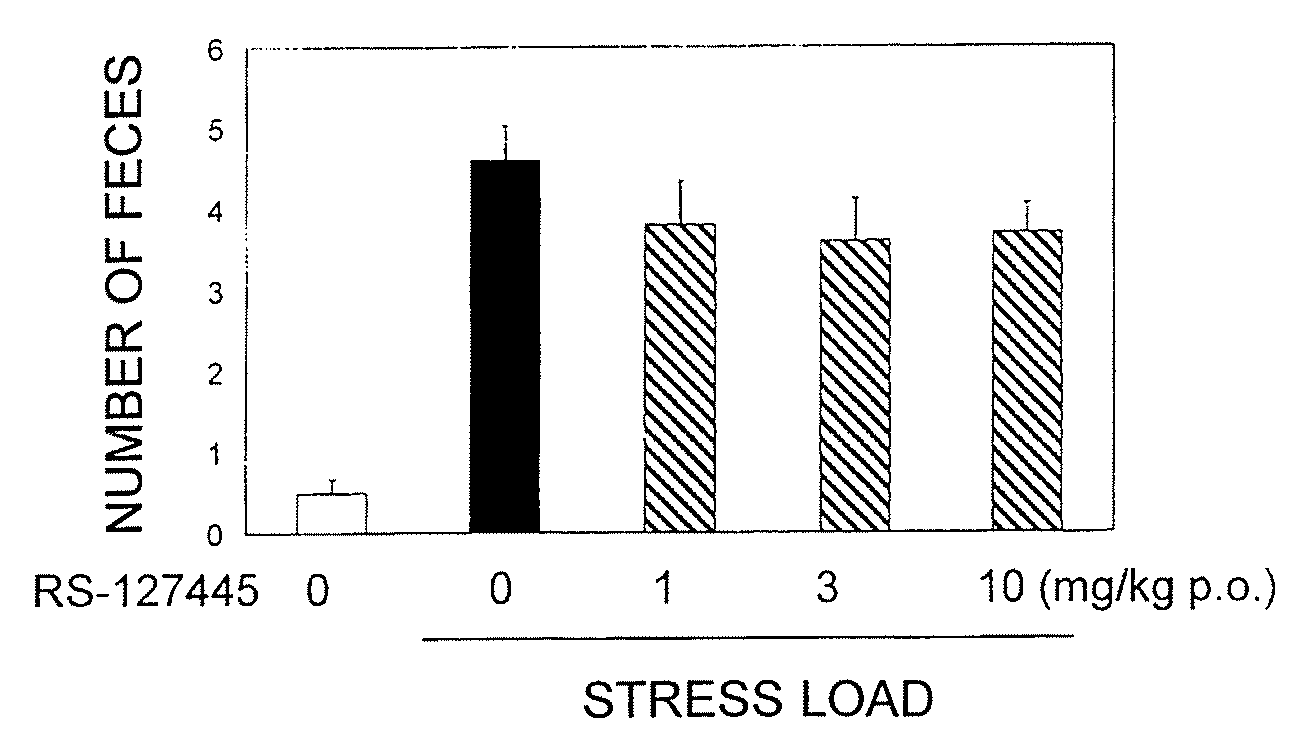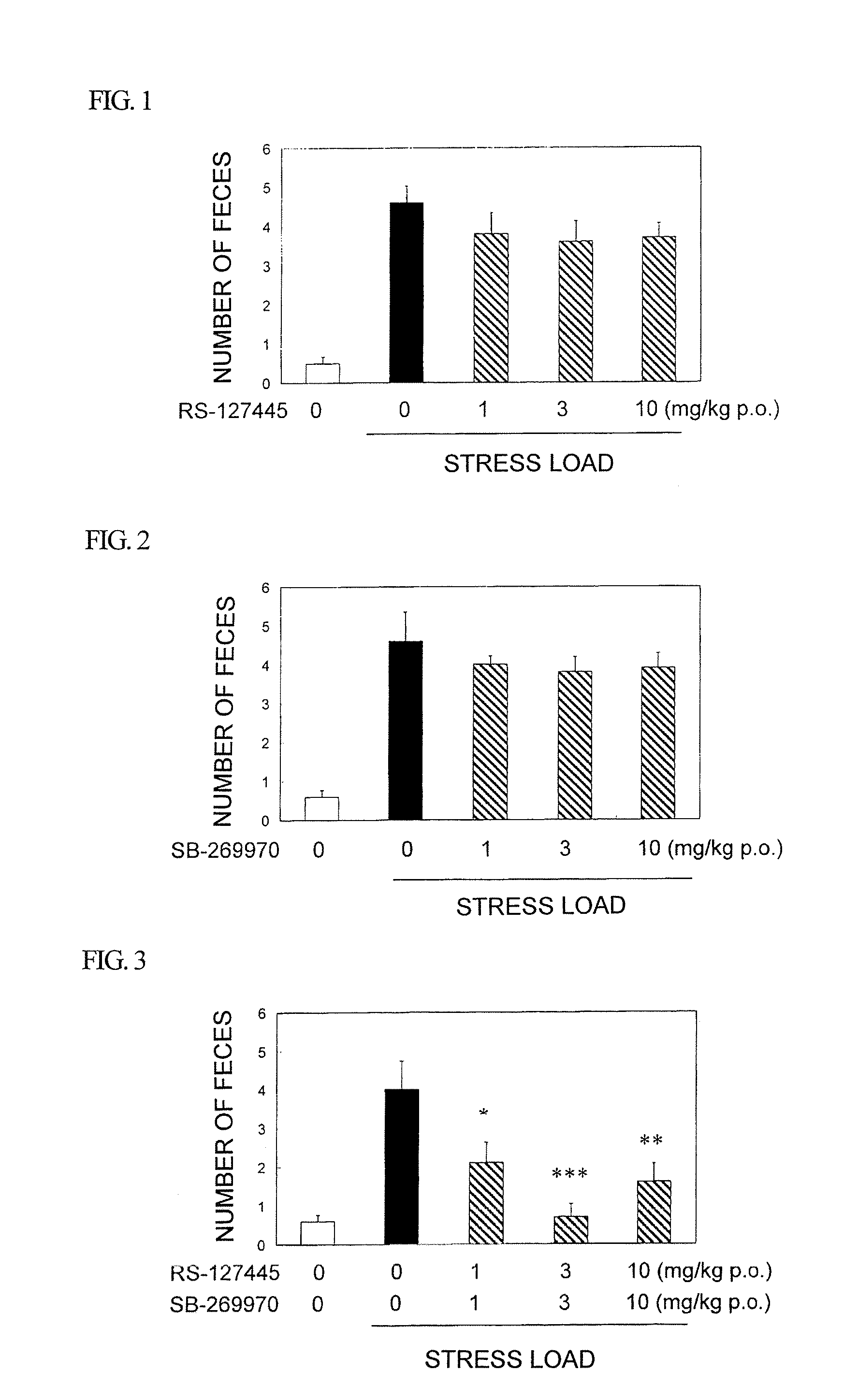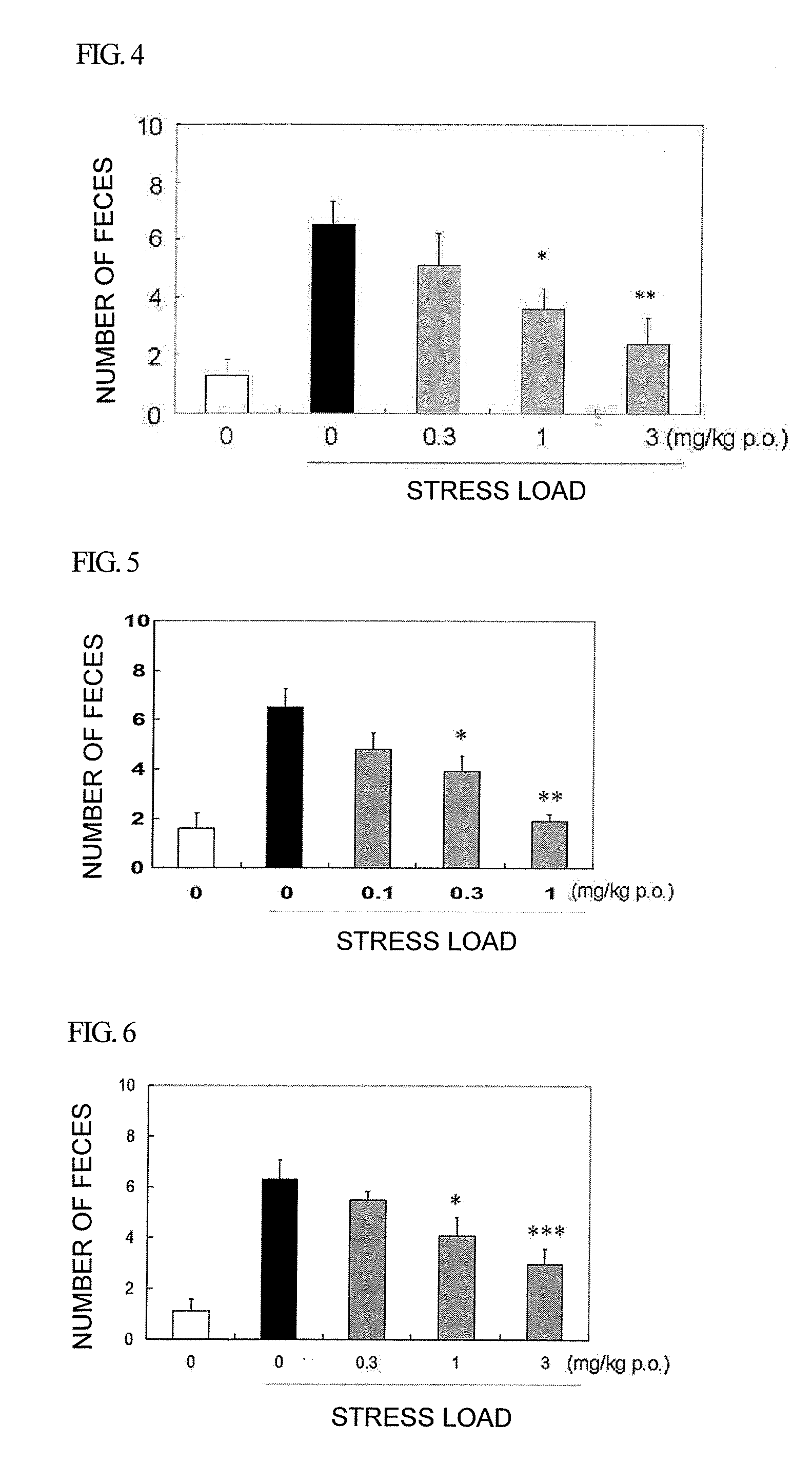Amide derivative or salt thereof
a technology of amide and derivatives, applied in the field of amide derivatives, can solve the problems of no reports on the 5-htsub>2b /sub>and 5-htsub>, etc., and achieve superior ibs-treating effect and excellent antagonistic activity
- Summary
- Abstract
- Description
- Claims
- Application Information
AI Technical Summary
Benefits of technology
Problems solved by technology
Method used
Image
Examples
production example 1
[0188]A 5.00 g portion of 4-hydrazinobenzoic acid was suspended in 50 ml of ethanol, and 5.6 ml of 3-pentanone and 2.7 ml of sulfuric acid were added, followed by stirring at 85° C. for 24 hours. After evaporation of ethanol under a reduced pressure, water was added to the residue under ice-cooling, followed by stirring at the same temperature for 30 minutes. The resulting solid was collected by filtration and then washed with water to obtain 6.34 g of ethyl 2-ethyl-3-methyl-1H-indole-5-carboxylate as a light brown solid.
production example 2
[0189]A 500 mg portion of ethyl 2-ethyl-3-methyl-1H-indole-5-carboxylate was dissolved in 10 ml of N,N-dimethylformamide, and 113 mg of sodium hydride (55% dispersion in oil) was added under ice-cooling, followed by stirring at room temperature for 30 minutes. Then, 490 mg of 1-(bromomethyl)-4-fluorobenzene was added under ice-cooling, followed by stirring at room temperature for 2 hours. After evaporation of the solvent under a reduced pressure, the residue was diluted with ethyl acetate and washed with water and saturated brine. After drying the organic layer with anhydrous sodium sulfate, the solvent was evaporated under a reduced pressure, and the residue was purified by silica gel column chromatography (ethyl acetate:hexane=1:20 to 1:0) to obtain 587 mg of ethyl 2-ethyl-1-(4-fluorobenzyl)-3-methyl-1H-indole-5-carboxylate as a pale brown oily material.
production example 3
[0190]A 587 mg portion of ethyl 2-ethyl-1-(4-fluorobenzyl)-3-methyl-1H-indole-5-carboxylate was dissolved in 10.5 ml of ethanol, and 3.5 ml of a 1 M sodium hydroxide aqueous solution was added, followed by overnight stirring at 80° C. Under ice-cooling, 1 M hydrochloric acid and water were added thereto, followed by stirring at pH 1 for 1 hour. Then, the resulting solid was collected by filtration to obtain 498 mg of 2-ethyl-1-(4-fluorobenzyl)-3-methyl-1H-indole-5-carboxylic acid as a pale pink solid.
PUM
| Property | Measurement | Unit |
|---|---|---|
| temperature | aaaaa | aaaaa |
| pH | aaaaa | aaaaa |
| total volume | aaaaa | aaaaa |
Abstract
Description
Claims
Application Information
 Login to View More
Login to View More - R&D
- Intellectual Property
- Life Sciences
- Materials
- Tech Scout
- Unparalleled Data Quality
- Higher Quality Content
- 60% Fewer Hallucinations
Browse by: Latest US Patents, China's latest patents, Technical Efficacy Thesaurus, Application Domain, Technology Topic, Popular Technical Reports.
© 2025 PatSnap. All rights reserved.Legal|Privacy policy|Modern Slavery Act Transparency Statement|Sitemap|About US| Contact US: help@patsnap.com



